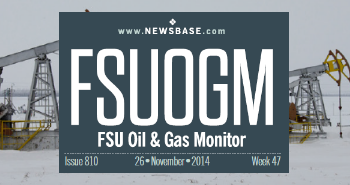COMMENT: China will drive a hard bargain for Russian gas

China would like more Russian gas. But it does not need it urgently, and will make Moscow pay for the privilege.
A country that is one of the biggest consumer markets in the world of natural gas, would naturally look towards a neighbouring country that has the biggest reserves of gas for supply. And that is what China did. In 2019, China began receiving gas from Eastern Siberian fields via the Power of Siberia pipeline. Supplies reached 15.5bn cubic metres last year and are due to reach the full capacity of 38 bcm per year by the middle of the decade.
Then in February last year, Beijing and Moscow reached a second deal for an additional 10 bcm per year of gas for delivery to China from fields off the coast of Russia’s Sakhalin Island through the Far East.
Within weeks, Moscow invaded Ukraine. Before the war, Beijing had the upper hand in all negotiations with Moscow on gas supply. After the war started, its bargaining power has only increased.
Russia has now lost the vast majority of its European market share. Having sent 155 bcm to the continent in 2021, its supplies are on track this year to fall to a mere 25 bcm. A colossal effort of self-harm, which the Kremlin had hoped would push the West to ease its support for Ukraine in the midst of a cold winter. But the winter was not cold, it was unusually warm, and Europe made it through the cold season without the loss of heating and rolling blackouts that some experts feared and some Russian officials may have hoped for.
After switching off the gas, Moscow likely had some expectation that, once affairs had quickly been resolved in Ukraine, Russia could reclaim its former market share and things would return to the status quo. But the war carries on, and in the meantime, Europe has been expanding its LNG regasification capacity at breakneck speed. New LNG contracts have been signed, and, to a significantly lesser extent, new field investments in the North Sea have been sanctioned.
There is no going back. Russia may well once more become a relatively important supplier to the European market. But its position as the supplier of a third of Europe’s energy is very unlikely to be restored.
So now Moscow’s attention turns eastwards to China, with the hope that it can one day make up for the loss of Europe. Russia is desperate and China knows this.
As for itself, China will need a lot more gas to realise its “Blue Sky” ambition, to expand the role of gas in the decades to come. But it has many choices. Domestic production is on the rise, and LNG imports have been embraced. On volume, China has signed more LNG import contracts than any other country over the past year. It also has gas from Turkmenistan on hand, if it decides to agree to expand them.
Power of Siberia 2
For years, Russia has been pushing for the development of a second pipeline to China, Power of Siberia 2. Originally the pipeline was to run from the southern Russian region of Altai straight to China. But the plan was then revised to construct a pipeline via Mongolia. This pipeline would be bigger than Power of Siberia 1, with a capacity of 50 bcm per year, delivering gas all the way from Arctic fields that once served Europe, all the way to China’s key demand centres.
Now Moscow is looking to clinch a deal as quickly as possible. And Russia has few other options. It is pumping more gas to Central Asia, and Azerbaijan, and it is hoping to send more to Turkey, some of which could end up covertly sent up on European markets. Most of all it has its LNG ambitions, but it is unclear how quickly they will materialise. Russia’s LNG programme to date has relied for a significant extent on Western technology and equipment, which is now no longer accessible. The first of the upcoming Arctic LNG-2 project’s three trains may well come on stream on time at the end of this year, in spite of recently-introduced fresh US sanctions. But what about the second and third?
Russia has long-focused on localising the production of those things it used to rely on the West to provide. But if this programme, which began in 2014, has not yet yielded results, why should we expect it to yield very fast results needed by the government now. The need is now much more urgent – and necessity is very valuable for progress – but the capacity to achieve this feat is greatly diminished, given the fallout of sanctions and broader international isolation.
So now there’s China, waiting for gas from a country with significant reserves without enough market for them. Beijing will drive a hard price on that gas, and it will likely make Moscow pay in full for the construction of the pipeline to bring that gas. The pricing terms in the contract for Power of Siberia supplies have never been publicly disclosed, but Bloomberg reported in September, citing Russia government documents, that gas from Power of Siberia would be priced at $271.6 per 1,000 cubic metres next year, versus $481.7 for Turkey and Europe.
Russia had hoped to get Chinese funding for the first Power of Siberia. But it didn’t. Moscow’s bargaining power was much stronger back then, when its relations with the West were relatively warm, even after the annexation of Crimea. But it still had to finance the pipeline itself. There should be no expectation that China should do anything differently this time around, despite Putin and Xi’s “No Limits” partnership.
It is clear who the weaker partner is.


Follow us online